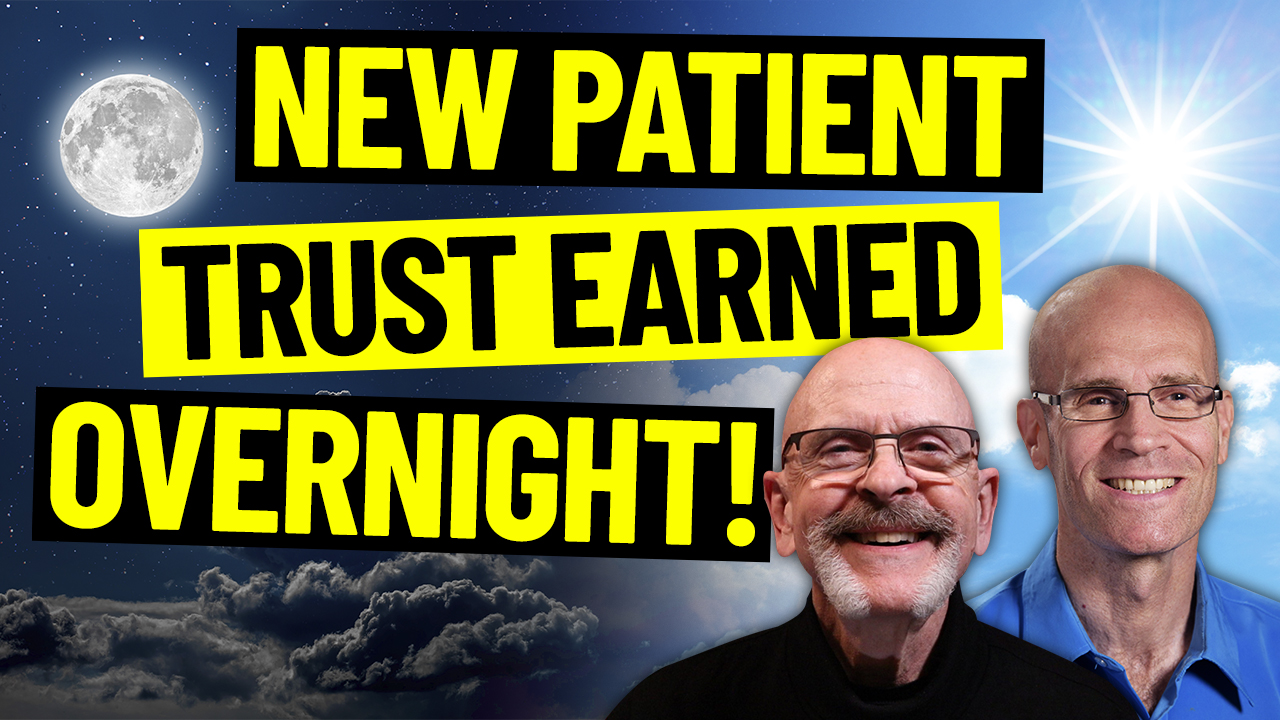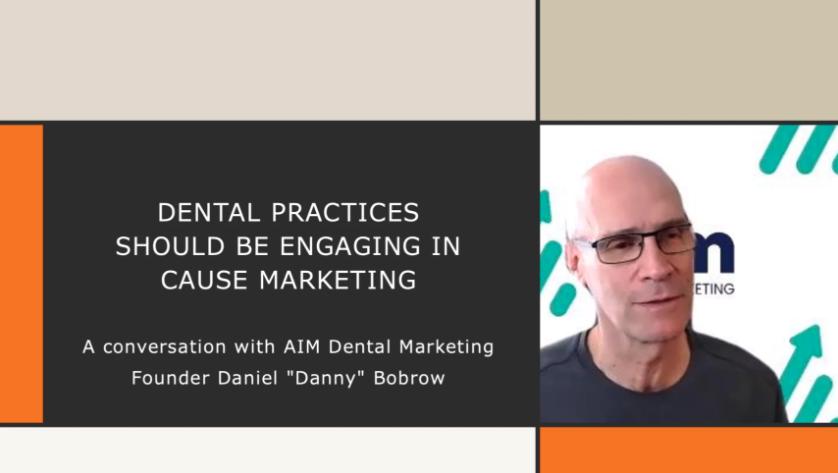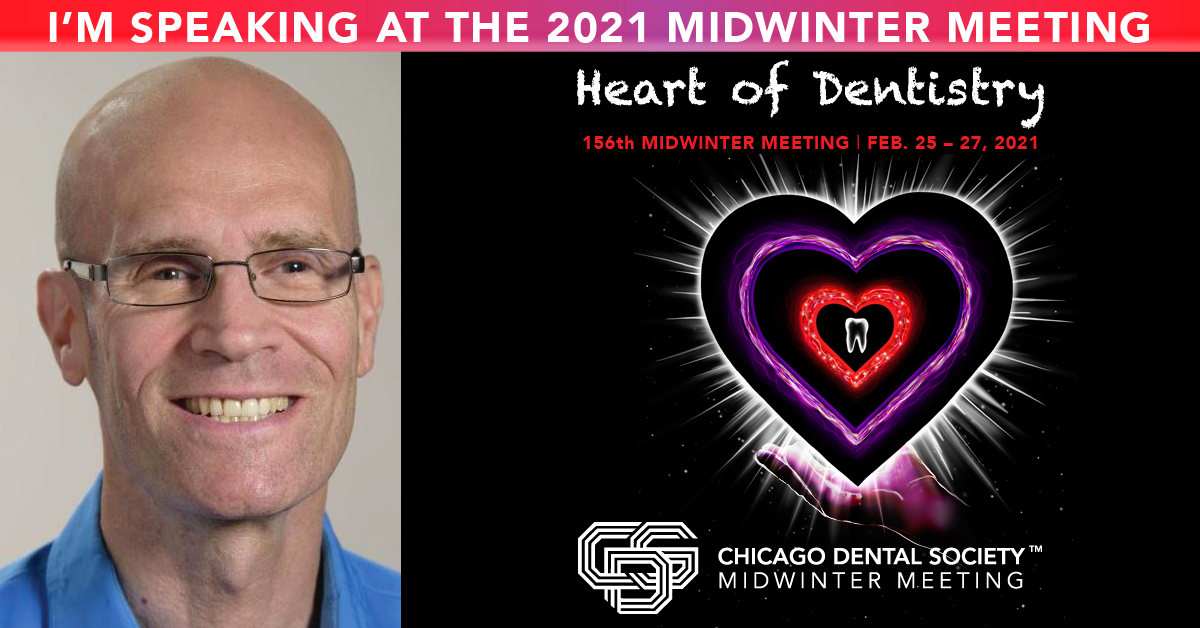Four cases illustrate how to conduct marketing feasibility studies, regardless of whether you`re a rookie or a veteran, or whether you cater to country folks or city dwellers.
Four cases illustrate how to conduct marketing feasibility studies, regardless of whether you`re a rookie or a veteran, or whether you cater to country folks or city dwellers.
Daniel A. Bobrow, MBA
The need for reliable and predictable methods for attracting new patients is more acute than ever. Developing and implementing a well-thought out dentistry marketing plan offers the practice a way to assume greater control over its rate of growth and, in so doing, reduce stress in the office, all while adding a new and positive dimension to the career of both doctor and staff.
One of the best ways we know to move more rapidly along the marketing learning curve is by learning from other successes (and failures).
To that end, we present “real world” examples, taken from our client charts, of pitfalls, and how to avoid them. Only the names have been omitted to protect the innocent (and guilty).
Of course, it would be great to have a crystal ball to determine the optimum design of your marketing plan right from the start. The reality is that some mid-course correction is inevitable. By viewing the initial stages of your marketing program(s) as a kind of applied market research, you will make better, more informed marketing decisions, and gain a clearer picture of how and where to best allocate your scarce marketing resources.
Now let us elaborate on some specific cases so you can see just how various situations may be analyzed and evaluated. Even if you cannot directly identify with all of the cases presented, you should be able to apply the structure of the analysis to your specific practice situation.
Case I
New Practitioner
Background: A doctor who was one year out of dental school wanted to open a practice near Minneapolis. The doctor was primarily interested in attracting fee-for-service patients. As his was a new practice, his cash reserves and patient base were limited. Fortunately, he had grown up in the area, and so was able to draw upon personal connections (friends and family) to open with an existing patient base.
Analysis: A marketing feasibility study revealed that, among other things, there was a significant volume of resident turnover. A marketing feasibility study attempts to identify the strengths, weaknesses, opportunities and threats associated with operating a dental practice in a given area. Inputs to the analysis can range from the doctor and staff`s own experiences and observations to demographic data procured from external sources such as the U.S. Census Bureau. Using data collected from a similar practice near his service area, it was estimated that the average annual value per new patient in his area was $585 (see inset titled, Measures of Marketing Effectiveness). The reason data from another practice was used is that, being new, this practice had an insufficient patient base for this purpose.
Approximately 300 individuals and families were moving into the doctor`s Service Area each month.
A good rule of thumb for young practices is to allocate a minimum of 5 percent of estimated first year collections to marketing. This practice`s first year fees were estimated to be $150,000. This meant an annual marketing budget of $7,500 and a monthly budget of $625.
Implementation: Being a new practice, a majority of the marketing budget was devoted to external marketing. External marketing means communicating with people who are not yet your patients.Two thirds or roughly $400 per month would be devoted to targeting new residents. This meant that $1.33 (400 divided by 300) could be spent on communicating with each new resident. For that amount, each new resident could receive two mailings. These mailings would be sent two months apart.
A reasonable expected response rate to a mailing of this sort is one to two percent. Local demographic factors can affect the actual response rate. This would mean that, using the more conservative expectation of 1 percent, the practice could expect three new patients from each mailing.
Results: The average monthly rate of program response proved to be 1.25 percent. Return on investment (ROI), therefore, was 548 percent (an average of 3.75 new patients per month times an annual average patient value of $585, divided by the $400 cost to attract these patients).
Case II
Mature Practice
Background: A practice in Florida was experiencing deterioration in its patient base owing to increased prevalence of managed care and high mobility of the population.
Analysis: The marketing feasibility study determined that an increase in the percentage of the population participating in managed care and an increase in the proportion of dentists to population were responsible for the shrinkage in the patient base. The Study identified a downward trend in the median age of the population. It also identified an increase in the number and size of families with children.
Implementation: It was recommended that the doctor embark on an internal marketing campaign to “immunize” his practice against the loss of patients to managed care providers.
Because the doctor was an elderly gentleman who enjoyed treating patients closer to his own age, a marketing program directed at senior citizens was initiated. This entailed four quarterly mailings to high net worth individuals having a minimum age of 50 years.
A monthly New Resident marketing program was initiated that consisted of three mailings to each new resident over a three-month period. Because he had brought in a younger associate who was eager to treat younger patients, it was agreed that these mailers would be designed with an eye toward attracting the younger families moving into the area.
The doctor distributed literature on the benefits of fee for service dentistry to his patients, and sent letters to all patients leaving the practice for a managed care provider, explaining that, should their dental care needs not be met by their new provider, they were welcome to return. A number of patients who left the practice for a managed care provider did eventually return to the doctor`s practice.
Results: The above strategy combined with the new resident and seniors marketing programs resulted in a net increase in active patients after only nine months.
Case III
Competitive Urban Area
Background: The client had sent mailings to new residents each month for five years. While initially profitable, results were becoming lackluster (roughly 0.2 percent), and he wondered what could be done. The doctor did a reasonable job of tracking program response, and related that a number of practitioners had moved into the area and were performing similar programs.
Analysis: The mailing consisted of a two-page letter of introduction with no patient incentive mailed to new residents each month. He had been mailing using Standard Mail Postage (formerly known as Bulk Rate) for the past three years. Because inaccurately addressed mail is not returned to the sender when standard mail postage is used, he had no idea of the accuracy of the list he was using.
Implementation: A first class mailing was performed, yielding an inaccuracy or “nixie rate”of 25 percent. The decision was made to switch list providers. Using first class postage for the first month determined an accuracy rate of 93percent. This was well within acceptable limits so, to save on expense, future mailings were performed using Standard Rate Postage. For esthetic reasons, stamps were used instead of a Standard Mail indicia (imprint).
A follow-up mailing was added to his program, and an RSVP (postage-paid reply) card was inserted in both the first and second mailings. The doctor agreed to include an offer of a free InterPlak system for new patients. As a third contact, a telephone follow-up call was added.
The doctor also procured a practice management software package permitting him to track long-term patient value i.e. he was able to include recall and patient referral in his valuation. Also, printouts of all prospective patients contacted were retained to more reliably track program response.
Results: The Outbound Telemarketing Service yielded a handsome 18 percent response rate and an 80 percent “Quality Ratio”, that is, for every ten respondents, eight kept their first appointment. The response rate to the doctor`s new resident mailing program increased 350 percent.
Case IV
Blended Practice
Background: A multi-specialty practice in central Florida saw a number of major employers within the practice`s service area sign on with a capitation plan. With assistance from an outside consulting firm, it was decided that the practice should have 75 percent of its revenue derived from fee-for-service patients and 25 percent from managed care.
Revenues from fee for service treatment averaged $32,400 per month. The practice group signed up with a plan that paid five dollars for each enrolled patient. Two of the largest employer groups participating in the plan were a teacher`s union and municipal employees. Approximately 1,000 patients were immediately enrolled with the practice.
Analysis: Based on the above information, desired monthly revenue from the capitation program was $10,800 ($32,400 divided by 75 percent = $43,200 times 25 percent). Initial monthly collections from the Plan were $5,000 (1,000 times $5). Because the practice was committed to selling dentistry to both fee-for-service and capitation patients, it was expected that average monthly per patient revenues from patient co-payments would be equal to half the capitation fee earned per patient. So the average expected revenue per capitation patient is $7.50 ($5 plus $2). Therefore, the number of desired capitation patients is 1,440 ($10,800 divided by $7.50). Since 1,000 capitation patients were immediately enrolled with the practice, the desired quantity of new capitation patients is 440 (1,440 minues 1,000).
Implementation: The group historically spent 6 percent of its annual revenue on marketing. It was agreed to allocate 25 percent of this budgeted amount to enrolling participants in the capitation plan. The total annual marketing budget of $23,328 ($32,400 monthly revenue times 12 months times 6 percent) would be allocated proportionally between the fee-for-service and capitation groups. In other words $5,832 (25 percent of total) would be devoted to enrolling participants in the capitation plan.
Enrolling capitation patients would be accomplished by targeting known participants in the plan. Three consecutive monthly mailings were sent to each of approximately 1,500 teachers, 1,000 municipal employees and 2,500 employees of other firms known to be participating in the plan. Employee benefits administrators were also contacted via telephone to introduce the practice and request that literature be posted in common areas to introduce the practice group to the employees. An InterPlak System was offered as an inducement for visiting the practice. To stem fee-for-service attrition, the practice implemented a new resident marketing program consisting of four mailings to each new resident over a four month period.
Results: Within one year of initiating the above programs, the practice added nearly 350 capitation patients. Fee-for-service patients increased 10 percent. While the number of new enrollees was 90 patients short of goal, the practice understood that this level of growth after only one year had positioned them to meet or even exceed their goal over the next year.
We have presented the foregoing material with two purposes in mind. First, it is hoped that, by illustrating the challenges and impediments to success, the reader will be able to anticipate and avoid them, and thereby realize a positive dentistry marketing experience. Second, we encourage the reader to apply the various tools of analysis discussed above to make sound marketing decisions. The savings in time, money and frustration, and the rewards that follow, are well worth the effort.
Snapshots of marketing solutions
What`s a patient worth?
A solo practitioner located in a rural community had no idea what the long-term value of a patient was to her practice. Consequently, she was unable to evaluate the cost-effectiveness of any new-patient acquisition system she employed. In another practice, the receptionist of a New Jersey dentist was concerned because their outbound call-handling telemarketing service was “only” yielding three new patients per month on a monthly investment of $200.
Both practices failed to take the time to calculate the average annual value of a patient, as well as the average “lifetime” of a patient (see related article on next page). When they performed the valuations, it was determined that the “average long-time value of a patient” (average annual patient value multiplied by average lifetime of a patient) was $3,200 and $6,100, respectively, for the two practices.
Armed with this new information, both practices were able to confirm that the performance of their programs was, in fact, quite impressive. Of course, it is also essential to be aware of the cash flow consequences of all marketing decisions.
Lesson: You need to know both the cost and the benefit to perform a cost-benefit analysis .
“Sorry, wrong number.”
A practice employed a receptionist whose attitude, to put it diplomatically, was not conducive to encouraging potential patients to join the practice. A receptionist at another practice was completely oblivious to the existence of a marketing plan.
Both practices were encouraged to perform “test calls” prior to initiating any future external marketing programs. A test call simply consists of someone calling your office posing as a prospective patient who is responding to a mailing they recently received.
Results of the test calls make a practice aware of any impediments to success before real damage is done.
Lesson: Prepare and educate your staff.
Missing the forest for the trees
A dentist in a rural part of a Midwestern state believed people would not be willing to travel more than 20 miles to see the dentist. This assumption was further bolstered by the fact that only a small percentage of his current patient base lived or worked beyond a 20-mile radius.
By marketing to new residents in a zip code nearly thirty miles away, this doctor discovered an under-served area. In so doing, he realized an impressive rate of return for himself. Also, because his office was on a road used by these residents to travel to work in the nearest main city, he made these people aware of a convenient location for their dental needs.
Lesson: Let your service area speak for itself.
Take the elevator up to the sixth floor…
A client located in a predominantly urban setting was having trouble attracting new patients. Her office was not visible from street level, and the residential population was insufficient to support marketing efforts directed to that group.
Employers and employees were targeted at their place of work, and a direct mail/telemarketing campaign was initiated. Within eight months, new patient flow increased markedly.
Lesson: Don`t be afraid to try different approaches.
Formula for determining “Active Patient Count”
– Count number of patient records in active files.
– Sample at least 150 to determine percentage who have been in during previous 18 months for any dental visit.
– Apply percentage of current patients from sample to total number of patient records. Add number of “Current Floating” records (records “in process” around the office).
– Total number is valid active patient count.
Example:
Active Charts = 1,445
Sample 134/155 = 86%
Current Floating = 41
Active Patient Count = 1,445 x .86 + 41 =1,283
Procedure for finding “Average Patient Lifetime”
– First, calculate “patient survivorship.” this requires that a measure of your active patient count be taken at two different points in time. Then, subtract new patients acquired since the preceding active patient count from your most recent active patient count.
– Subtract the patient survivorship from 1 and divide by the number of months between counts; multiply by 12 to determine the percentage lost per year.*
– Divide 100 by the percentage lost last year to arrive at the average lifetime of a patient in years*
* These are simplified formulas. Accuracy will decrease the greater the time between active patient counts using the above method. For most practical purposes, it will work with active patient counts taken within one to two years of each other.
Excerpted from The Life Time of a Patient. Reprinted with permission of Bill Rossi, Advanced Practice Management.
Measures of Marketing Effectiveness
The first question to ask when embarking on any patient acquisition or retention program is, “What do I stand to gain from my program?” To help you decide, first calculate the value to your practice of a typical patient. This is accomplished by calculating your Average Annual Patient Contribution to Overhead (AAPCO).
To calculate your AAPCO, randomly select 30 patients who have been with the practice for at least one year. Using a table, enter the Total Dental Production revenue generated by each patient in a column labeled Dental Production. Next, enter the Total Hygiene Production revenue in a column labeled Hygiene Production. Once you have 30 patients selected, add each production column and divide each by 30.
Next, multiply your total Dental Production times your Net Adjustment Factor. To calculate your Net Adjustment Factor, you subtract the following from 100 percent: 4% loss rate/bad debt expense + 7% universal variable expense + 10% lab fees = 21%. Therefore, your net Adjustment Factor is .79 (100% – 21%). Finally, to calculate your Average Net Dental Production, multiply your Total Dental Production times .79.
Also, you need to calculate your Average Net Hygiene Production. To determine it, you follow the same steps as above, but your Net Adjustment Factor is .89 (100 – (4% loss rate + 7% universal variable expense)). To calculate your Net Hygiene Production, multiply .89 times your Total Dental Production.
So, your AAPCO formula is (Total Hygiene Prod. / 30) x .89) + (Total Dental Prod. / 30) x .79). For a very enlightening article on Patient Lifetime Value, call The American Dental Company at (800) 723-6523 and request a reprint.









